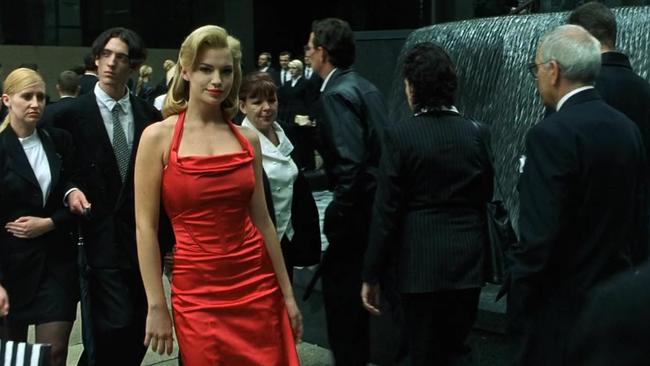Virtual reality brings immersive experiences within easy reach
PORTABLE virtual reality is coming soon to a store near you, and the sky’s the limit as far as potential applications are concerned.

I’M flying over Antarctic icebergs, looking up, down, left, right and even backwards as I soar. Moments later I’m in the ocean swimming near a group of sharks, frantically looking up and down for a way out, only to be gobbled up.
This wasn’t a movie or even a nightmare. It was my experience last week of immersive virtual reality, or VR, a powerful technology that puts you at the centre of vision or gameplay created 360 degrees around you at all angles. You really feel you are there.
Put on a 3-D visor and headphones, and your senses trick you into believing you are part of that concocted, artificial environment — with your real whereabouts blotted out. It’s a tech-delivered out-of-body experience that seems to be straight out of the 1999 blockbuster The Matrix.
What’s new is that virtual reality will become a mainstream consumer item before the year is out. The Oculus Rift, a highly sought-after crowd-funded VR viewer, won’t be released until next year but Samsung has jumped the gun, announcing it will release its Gear VR virtual reality headset in Australia on November 5. And that means mainstream availability soon.
The Gear VR is a portable version of the Oculus Rift produced in partnership with manufacturer Oculus VR. It’s an accessory to Samsung’s new Note 4 phablet-sized smartphone. You slot the Note 4 into the Gear VR to get it working.
Because you need both devices, you’ll pay more than $1000 for this virtual reality experience: $949 for the Note 4 and another $249 for the Gear VR headset. It’s great marketing for Samsung and Oculus VR.
Gaming is the obvious VR application. Via a project codenamed Morpheus, Sony is readying a VR device that will link to its PlayStation 4 console. It’s expected to debut next year. One Project Morpheus title, Jurassic Encounter, will throw gamers into a brutal, fully immersive prehistoric world.
There have also been independent moves to adapt hit 3-D sandbox game Minecraft to VR. That project will now depend on new owner Microsoft, which acquired developer Minecraft’s Mojang for an estimated $US2.5 billion (about $2.9bn) last month.
But immersive 360-degree movies and games are the tip of the iceberg for VR applications.
French manufacturer Parrot, for example, will soon sell its Bebop Drone quadcopter, an updated version of its popular Parrot AR Drone, with an added VR experience.
A person can pilot the Bebop as if they were sitting inside the drone by donning an Oculus Rift. They see a concocted 360-degree cockpit view created by the Bebop’s user-controlled 180-degree 1080p camera beamed to the Rift.
A host of other applications potentially make VR a more disruptive technology than television was in the mid-20th century, from teaching children using immersive learning games to immersive property tours in the real estate industry; from architectural and urban planning applications to military and medical simulations.
Linden Lab, the developer of Second Life, announced in May that it had began beta-testing a full 360-degree immersive version of its alternative world for the Oculus Rift. Users would be totally immersed walking around in their second world.
Control Bionics, a company founded by former Australian journalist Peter Ford, also is harnessing Second Life to provide an alternative reality to severely handicapped people such as those suffering motor neurone disease.
Despite their real-world handicap, they can walk, run and even fly inside their immersive virtual world. Ford says he is looking at adopting a different device, R-7 Glasses by San Francisco-based Osterhout Design Group, to deliver the experience.
Another application involves designing an object in a virtualised alternative world to obtain a design file that can be printed on a 3-D printer in the real world.
Australian digital research body National ICT Australia is using the Oculus Rift with its Doarama project to show adventure sports such as a hang-gliding and parasailing as 360-degree vision backed by simulated 3-D maps.
Users upload the GPS co-ordinates of their journey to the Doarama website, which constructs the 3-D landscape around the trip using the Cesium open source virtual globe and map engine.
NICTA’s senior software engineer Chris Cooper says it is already possible to construct 360-degree video by taking real video of an object shot with, say, a GoPro and augmenting that video with a virtualised version of its terrain reconstructed using the 3-D mapping data.
VR and telepresence also will be a potent combination. Telepresence lets you interact at a remote location as if you were there by controlling, say, a robot from afar. You walk and talk in that remote environment as if you were actually there.
So how does virtual reality work? The 360-degree video is typically shot by multiple cameras on a spherical rig.
The 360-degree Panopticam camera system has 36 high-definition cameras pointing in various directions. Integrated 360 degree cameras are also available, such as the 360 cam at http://store.360.tv/en, which costs just $US500.
Some camera set-ups stitch the video taken from various lenses into a co-ordinated 360-degree view in real time, making it available for immediate VR playback via streaming. Higher resolution systems use post-processing software, such as that offered by www.kolor.com for stitching.
Headsets such as the Oculus VR and Gear VR make use of sensors to decide which part of the 360-degree vision they show you. The Gear VR uses an accelerometer, gyroscope, magnetometer and proximity sensor to measure head movement or a change in direction. The slice of the vision you see alters accordingly.
Gear VR vision is driven by the Note 4’s screen, which has a very refined resolution of 2560 x 1440 pixels, 515 pixels per inch. That’s incredibly detailed. Vision out of the Gear VR is in no way high definition, but it’s compelling and realistic nonetheless.


